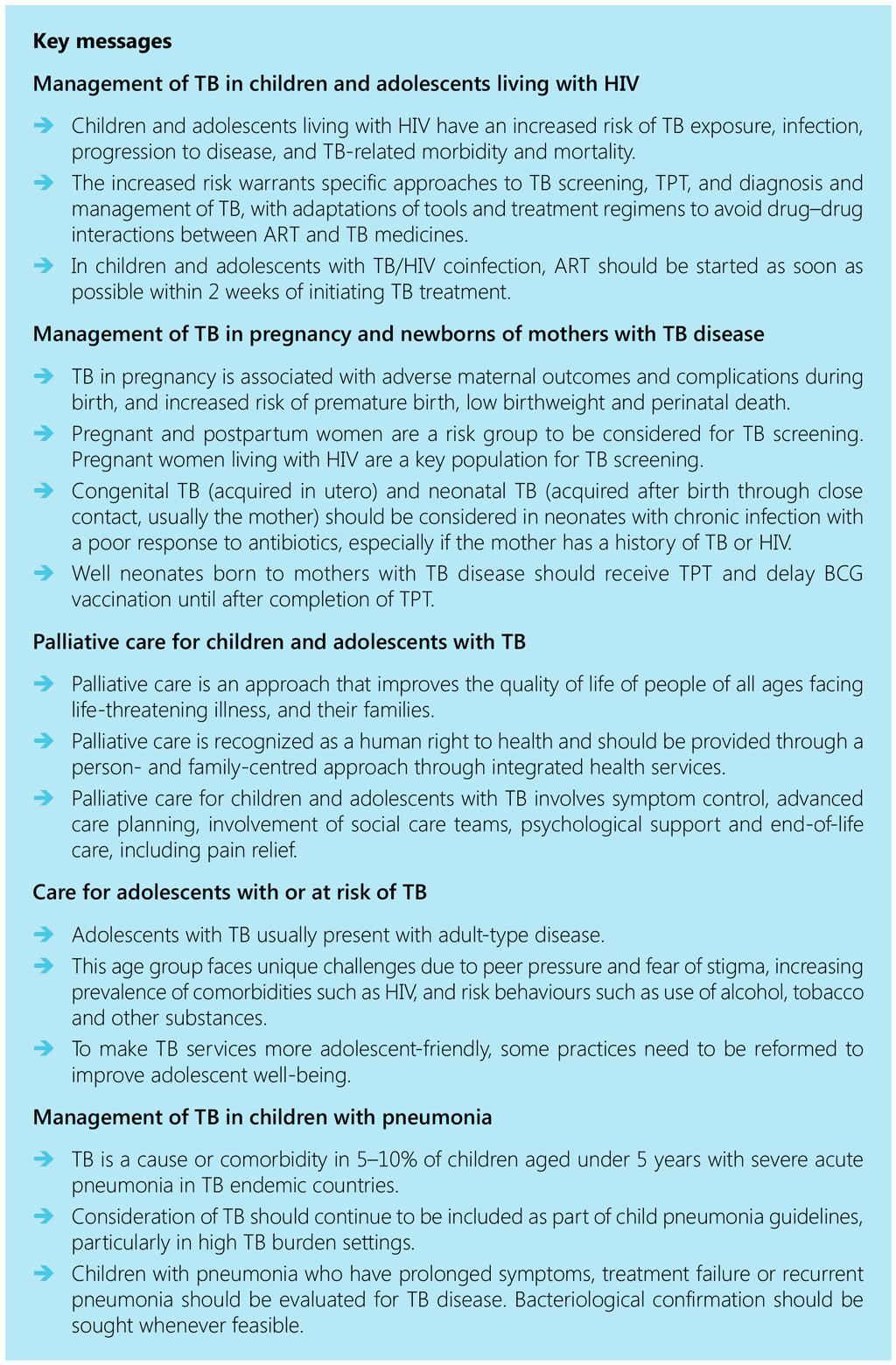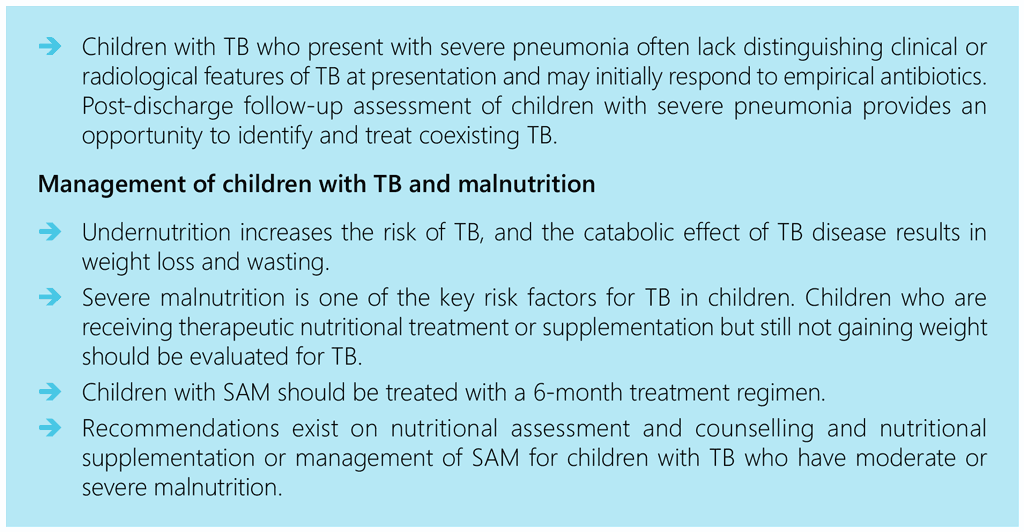Children and Adolescents
7.6.3. Nutritional care for children and adolescents with TB
WHO provides guidance on the principles29 and recommendations for nutritional care and support of people with TB as part of their regular TB care.
Five guiding principles are key for providing nutritional care and support as an integral part of TB care and prevention (105):
7.6.2. Diagnosis and treatment of TB in children with malnutrition
Children and adolescents with TB disease frequently present with failure to thrive or weight loss (see Chapter 4). Severe malnutrition is one of the key risk factors for TB in children. Children receiving therapeutic nutritional treatment or nutritional supplementation but still not gaining weight, or continuing to lose weight, should be considered as having a chronic disease such as TB and evaluated accordingly (6).
7.4.8. Making TB services more adolescent-friendly
As part of the review for the background question on adolescents, a group of experts was convened to propose actions for optimizing adolescent engagement in TB care. The proposed actions focused on two areas: reforming current practices that are harmful to adolescents with TB; and developing an adolescent-specific plan within each NTP to provide high-quality adolescent-centred TB services.
Box 7.6 summarizes the proposed interventions.
7.4.7. Poor adherence
Adolescents on treatment for TB disease are at risk for poor adherence in terms of missed doses and loss to follow-up. Predictors of poor treatment adherence for drug-susceptible TB include TB/HIV coinfection, age 15–19 years, prior TB treatment and male gender.
7.4.6. Substance abuse and late presentation to care
The review identified specific challenges of providing TB care to adolescents around substance abuse, late presentation to care and treatment adherence. Adolescence is a time when individuals may engage in reward-seeking and risk-taking behaviours, including substance use. This may increase the risk of developing TB disease, more severe disease or more unfavourable treatment outcomes. Further research is required to better understand how to co-manage TB and substance use in adolescents.
7.4.5. Agency and resilience
Stigma and hierarchical models of care such as facility-based treatment may undermine adolescent agency.27 Threats to social networks related to TB and its treatment and the increase in mental health challenges may impact adolescent resilience.28 Some adolescents with TB, however, demonstrate resilience by forming strong relationships with peers who are on treatment or by finding a sense of purpose or meaning from their illness experience (see web annex 4
7.4.4. Learning, competence, education, skills and employability
Adolescents experience disruptions to their education due to TB and its treatment. The time needed for facility-based treatment support can interfere with education, and the need for education may in turn disrupt engagement with TB services. Disruption or delays in education may be further affected by prolonged isolation or hospitalization. As a result, TB and associated treatment may have a significant impact on adolescents’ future livelihoods (see web annex 4).
7.4.3. Safety and a supportive environment
Adolescents with TB may experience threats to their human rights, including rights to safety, basic needs, access to health care without discrimination, protection against unnecessary hospitalization, and benefit from scientific progress. Adolescents and their families may incur devastating financial impacts, loss of income and food insecurity from TB and its treatment. Social and economic vulnerabilities increase the risk for poorer treatment outcomes, including loss to follow-up, treatment failure and death.
7.4.2. Connectedness and positive contribution to society
Prolonged isolation and hospitalization have substantial psychosocial and emotional impacts on adolescents, for whom peer and family relationships are critical from a developmental standpoint. TB-related stigma impacts on adolescents’ well-being and ability to engage with TB services. Family and peer relationships may, in turn, be disrupted or strained by isolation, separation or the effects of stigma.
Pagination
- Previous page
- Page 2
- Next page

 Feedback
Feedback

